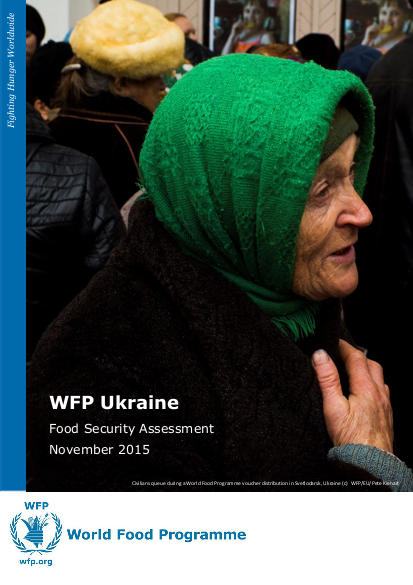
During September – November 2015, WFP Ukraine through its partner, the Kiev International Institute of Sociology (KIIS), carried out a food security and vulnerability assessment (FSA) in the Donetsk and Luhansk oblasts, in the government controlled areas (GCA), non-government controlled areas (NGCA) and the buffer zone (BZ). No major differences were found between NGCA and BZ. Therefore, for the purpose of this assessment report, these two areas will be considered as one common geographical area.
Initial analysis shows that the overall food insecurity levels are comparable to those found in the previous assessment conducted in March 2015 in eastern Ukraine. It is worth noting that the severity of food insecurity has moderated in NGCA, which may be attributed to the humanitarian assistance provided by various agencies, including WFP, and the relatively calm security situation. Around 1.5 million people were found to be food insecure, including 290,000 people who were severely food insecure and in need of immediate food assistance. Luhansk NGCA and the BZ seem to be the most affected by food insecurity, and are in need of further food security assistance.
Assessment results indicate that around 65 percent of people in both GCA and NGCA experienced a complete loss or a significant reduction of income during the September – November 2015 period. Moreover, on average, only 2.5 percent of the households in both GCA and NGCA expected the general situation to improve. Lack of employment opportunities and high prices of food continue to significantly affect households’ ability to access food, more so in NGCA. Pensions (62 percent of households) and benefits related to children (7 percent) represent the biggest share of social benefits and safety nets that households have access to.